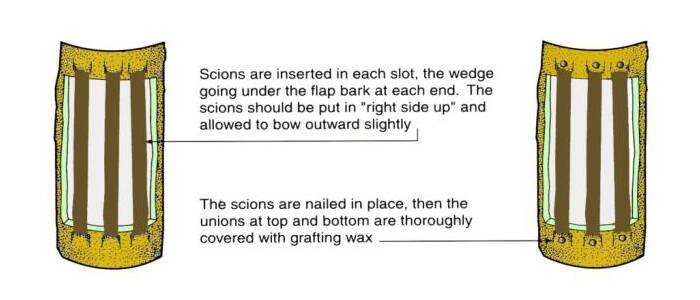A bridge graft is an example of a repair graft. It is done to rescue established trees that have been girdled by mechanical damage or animals.
Bridge grafting is best done in early spring when the bark is slipping.
Scions are taken from dormant one-year old stems.






